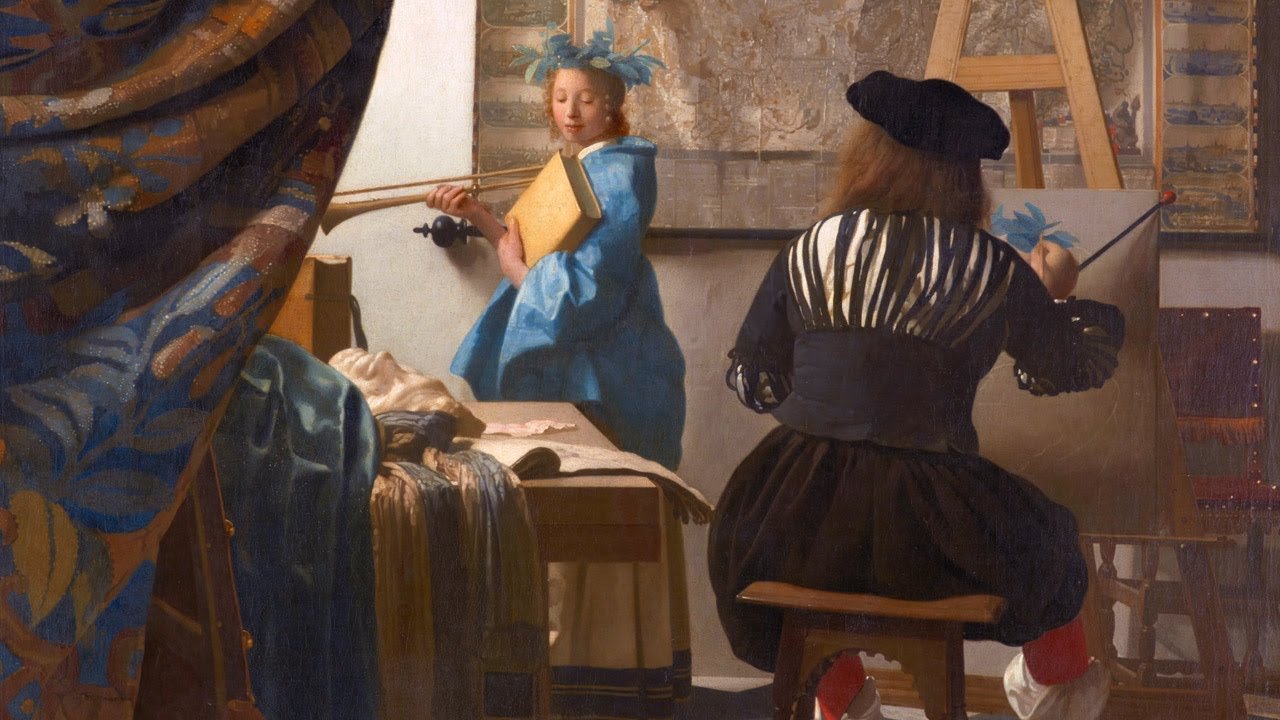A strong portfolio is essential for visual artists to showcase their work, attract potential clients, and secure opportunities in the art world. Whether you’re just starting out or looking to refresh your portfolio, here’s a guide to building a successful portfolio as a visual artist.

Curate Your Best Work
The foundation of a successful portfolio is the quality of the work you include. Carefully select pieces that best represent your style, skill level, and artistic vision.
- Tip: Choose a variety of works that demonstrate your versatility, but make sure they all align with your overall artistic identity. Quality over quantity is key—only include your strongest pieces.
Tailor Your Portfolio to Your Audience
Different opportunities may require different portfolio presentations. Tailor your portfolio to the specific audience or purpose, whether it’s for a gallery, a potential client, or a job application.
- Tip: If you’re applying for a specific role or opportunity, highlight works that are most relevant to the job. Customize the order and selection of pieces based on the type of work or clients you want to attract.
Showcase Your Process
Including elements of your creative process can add depth to your portfolio. Showcasing sketches, drafts, or progress shots can give viewers insight into how you develop your ideas and bring them to life.
- Tip: Include a few process-oriented images or a separate section in your portfolio that illustrates your workflow and problem-solving abilities. This helps potential clients or employers understand how you think and work as an artist.
Provide Context with Descriptions
Accompany each piece in your portfolio with a brief description. Explain the concept, medium, and any relevant background information that enhances the viewer’s understanding and appreciation of your work.
- Tip: Keep descriptions concise but informative. Include details such as the inspiration behind the piece, the techniques used, and any challenges you overcame during the creation process.
Organize Your Portfolio Effectively
The organization of your portfolio is crucial for making a strong impression. Present your work in a logical and visually appealing order that guides the viewer through your artistic journey.
- Tip: Start and end with your strongest pieces to create a lasting impact. Group similar works together, whether by theme, medium, or style, to create a cohesive flow.
Create a Professional Online Portfolio
In today’s digital age, an online portfolio is essential. Create a professional website or use an online portfolio platform to make your work easily accessible to a global audience.
- Tip: Use platforms like Behance, ArtStation, or your own website to host your portfolio. Ensure the design is clean and user-friendly, and that your work is displayed in high resolution.
Include a Personal Statement
A personal statement or artist’s bio adds a personal touch to your portfolio. This section should briefly introduce you, your background, and your artistic vision.
- Tip: Write a short paragraph that reflects your personality and artistic journey. Include your influences, goals, and what drives you as an artist. This helps viewers connect with you on a personal level.
Keep Your Portfolio Updated
Regularly updating your portfolio is crucial to ensure it reflects your current skills and artistic direction. As you create new work, replace older pieces or add new sections to keep your portfolio fresh.
- Tip: Schedule regular check-ins to review and update your portfolio. Remove outdated or less relevant works, and add new pieces that showcase your latest skills and artistic developments.
Gather Testimonials and References
Including testimonials or references from clients, teachers, or peers can add credibility to your portfolio. Positive feedback from others can reinforce the quality and professionalism of your work.
- Tip: Reach out to satisfied clients or mentors for a short testimonial that highlights your strengths and reliability as an artist. Display these alongside your work to build trust with potential clients.
Promote Your Portfolio
Once your portfolio is complete, actively promote it. Share it on social media, include it in your email signature, and network with other artists and industry professionals to gain visibility.
- Tip: Utilize platforms like Instagram, LinkedIn, and artist communities to share your portfolio with a broader audience. Consistently promote your work and engage with others to build your network and opportunities.
Conclusion
Building a successful portfolio as a visual artist requires careful curation, thoughtful organization, and ongoing updates. By showcasing your best work, providing context, and promoting your portfolio effectively, you can create a powerful tool that opens doors to new opportunities in the art world.




